August is here and the pollinators are in a frenzy for forage as fall inches closer!
This month, I took the time to become closely acquainted with the many different flying critters that could bee seen on the prairie. For the most part, the pollinators were not very hard to find as they could typically be found foraging on the pollen/nectar of the prairie wildflowers; however, there were a few exceptions with some of the bees as they would find interest in eating my lunch!
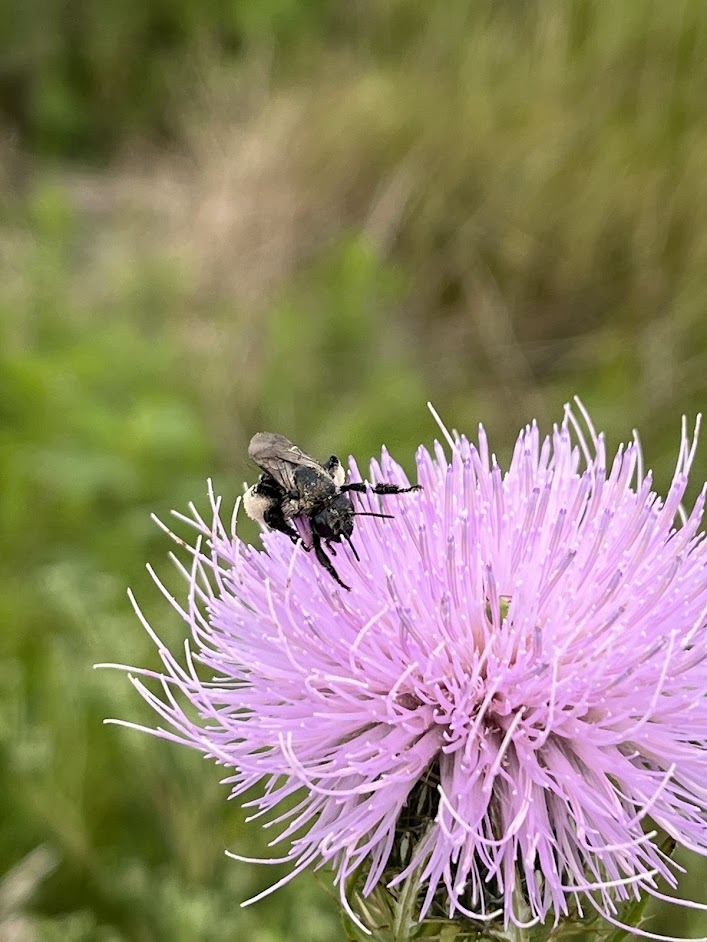
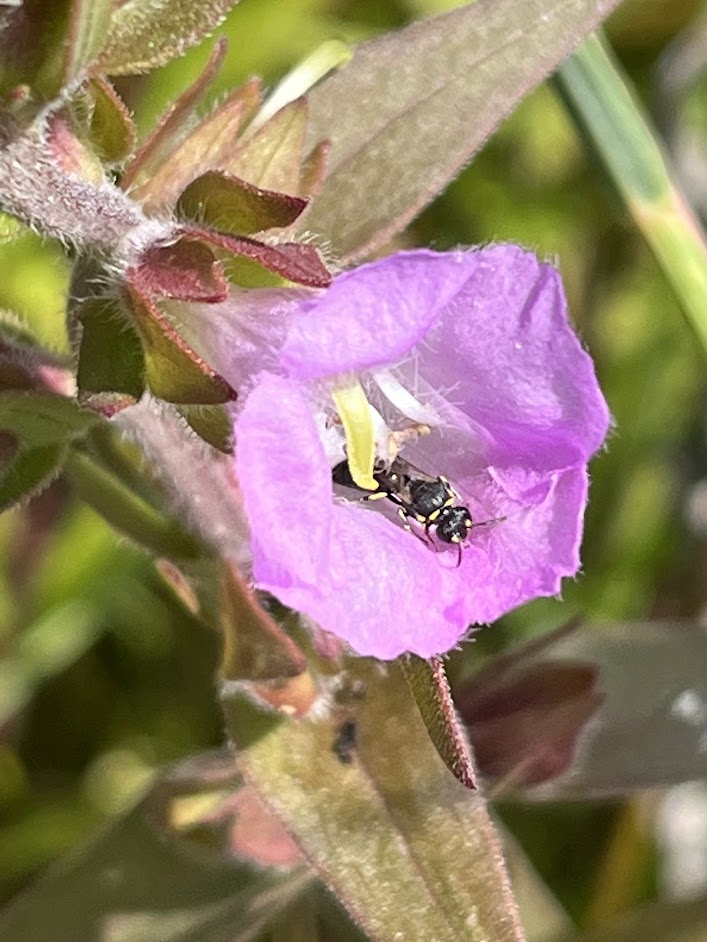
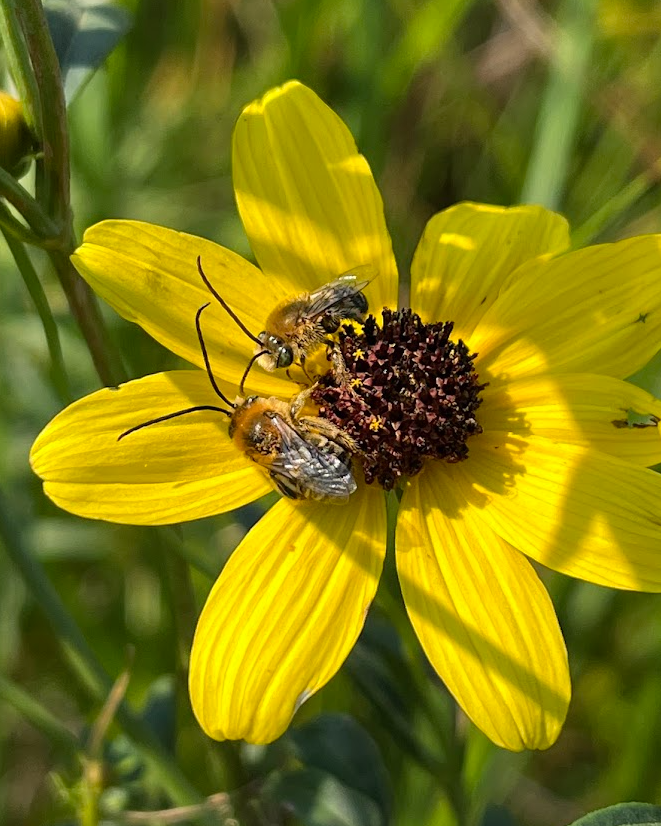
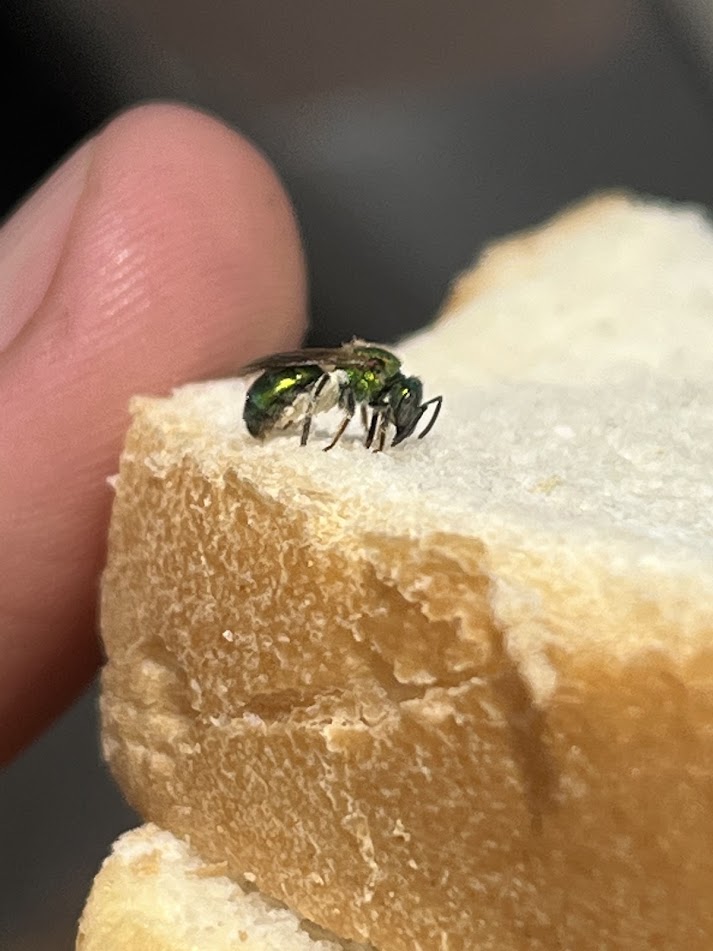
Aside from foraging on prairie plants or my lunch, the general behavior and nesting habitat of a few of the pollinators were interesting to watch. During Robel Pole protocols with Harsha, Michelle, and the other CLM interns, we were greeted by a group of Pearl Crescents (Phyciodes tharos) and Eastern Tailed-Blues (Cupido comyntas) at a puddle. Until recently, I did not know that this behavior was called Puddle Clubbing. Essentially, puddle clubs are congregations of the same or different species of butterflies (mostly males) that gather around a source of water (sometimes large or measly), which typically contains essential minerals that the butterflies can obtain with their proboscis. The puddles can also serve as an area for males to display and compete for a female if one happens to fly by!
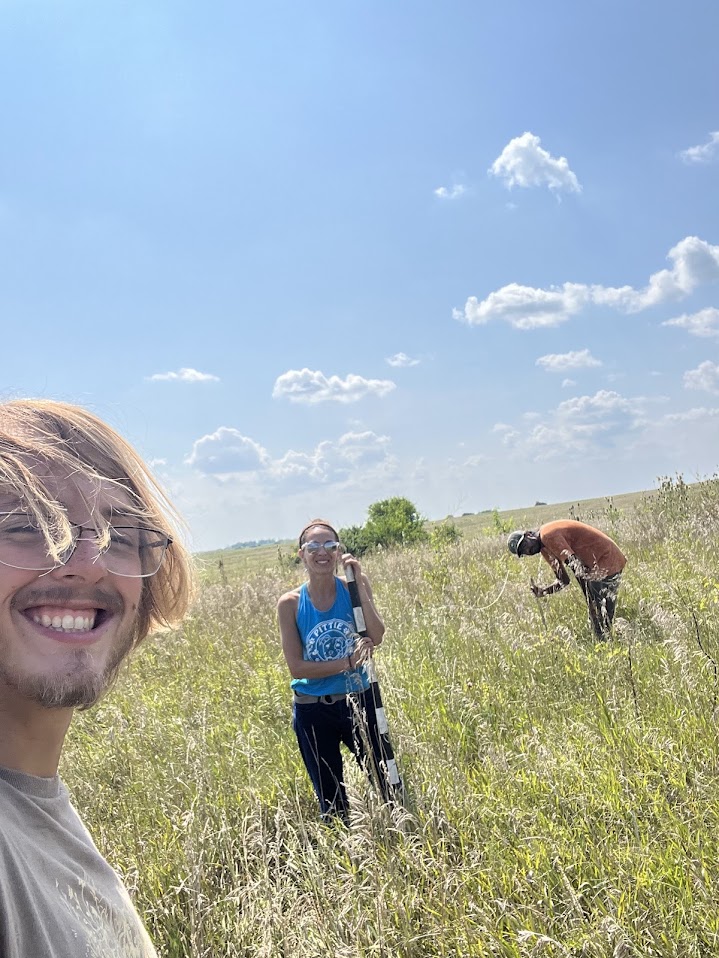
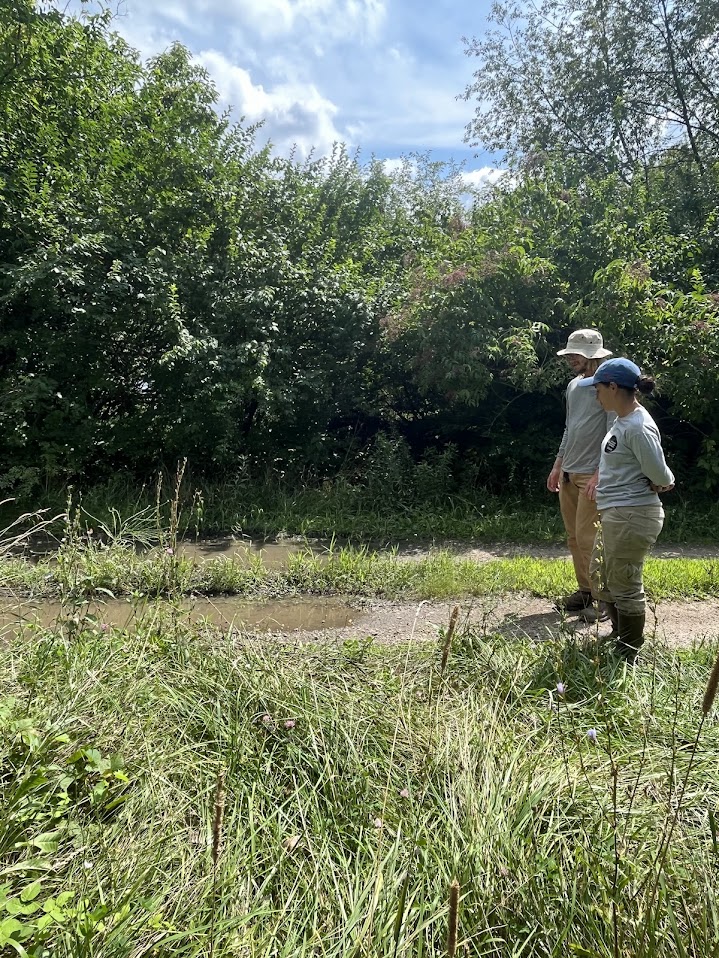
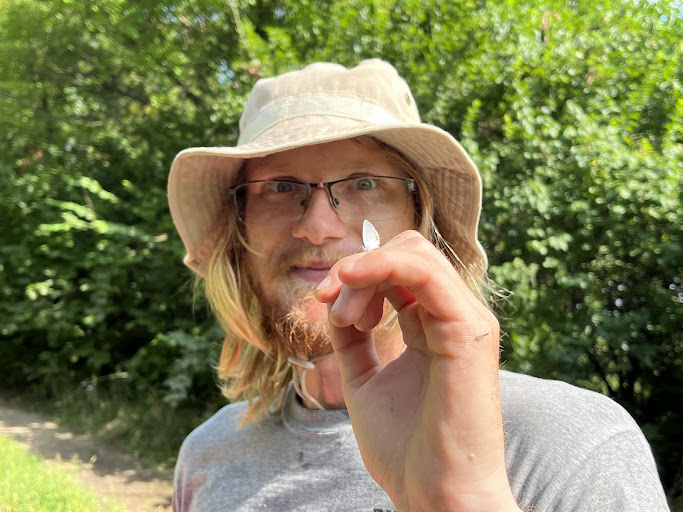
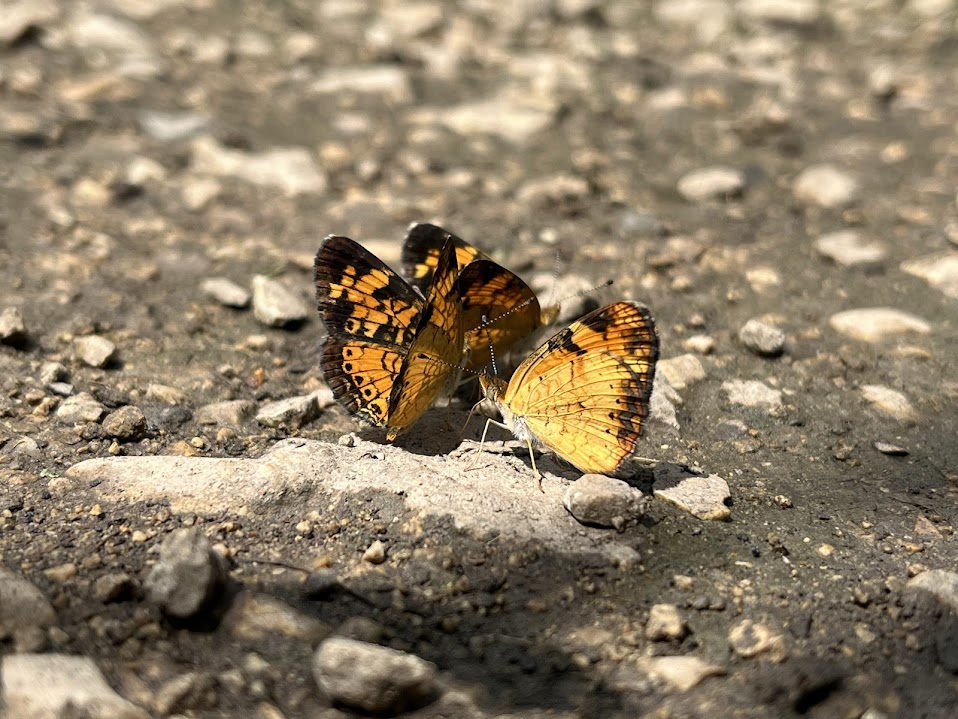
Regarding nesting habitat, the two species of pollinators I observed (a Megachilid sp. and the Honeybee, Apis mellifera) were relatively intriguing, to say the least. The Megachilid (a leafcutter bee) is a resident of the bedrock pavements of the dolomite prairie that we observed while monitoring the Hispid False Mallow (Malvastrum hispidum). In this habitat, there can be little to no soil and the pavements can get relatively hot during the day, so it was impressive to see this species utilizing this area for a home! As interested in bees as I am, I took a closer look at the leaf cutter’s home by moving the rocks at the entrance of the nest to see see how deep it was. Shortly after displacing the rock, Ingrid from POC, Naomi, and I were greeted by a disoriented bee…sorry!
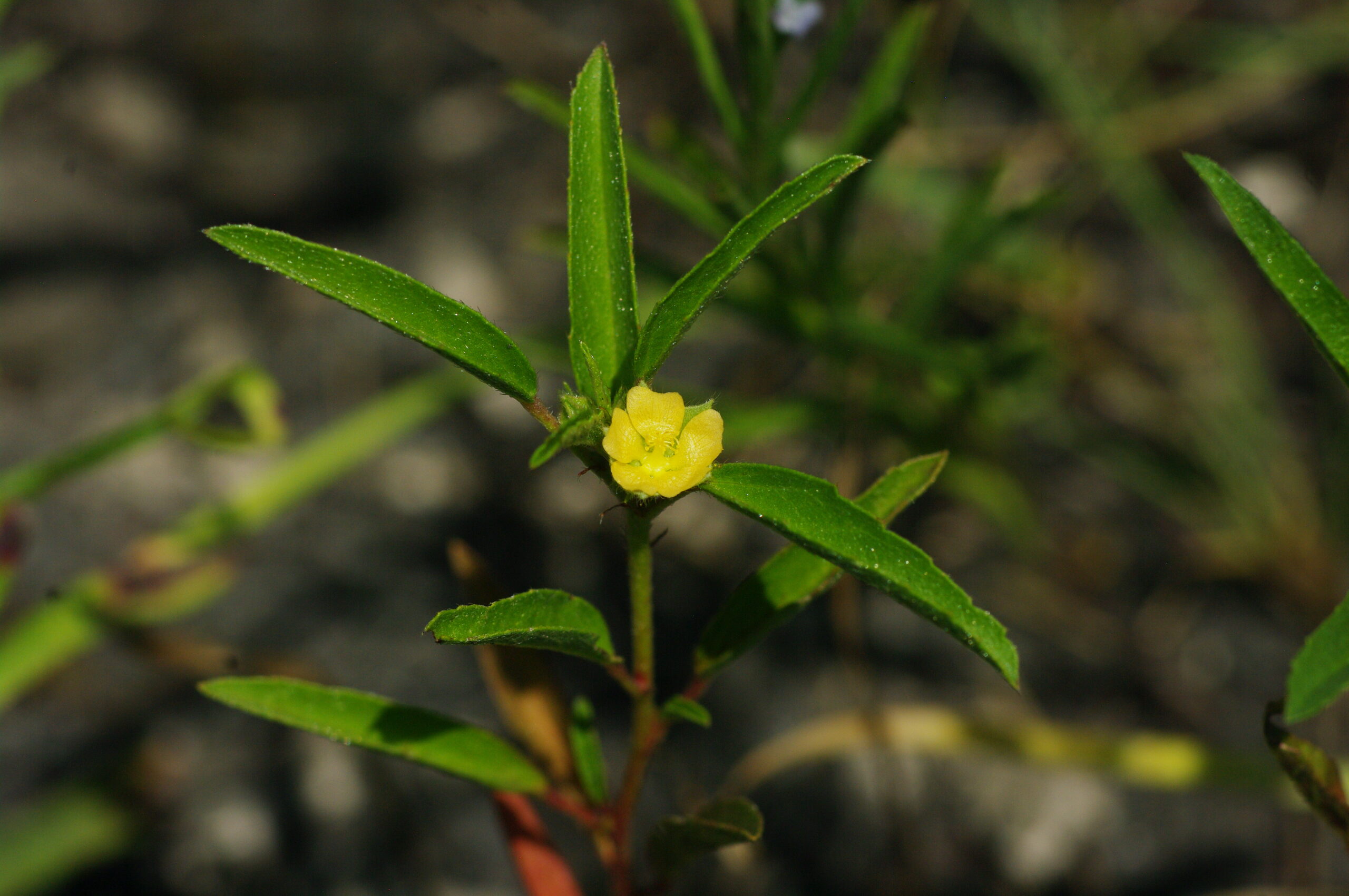
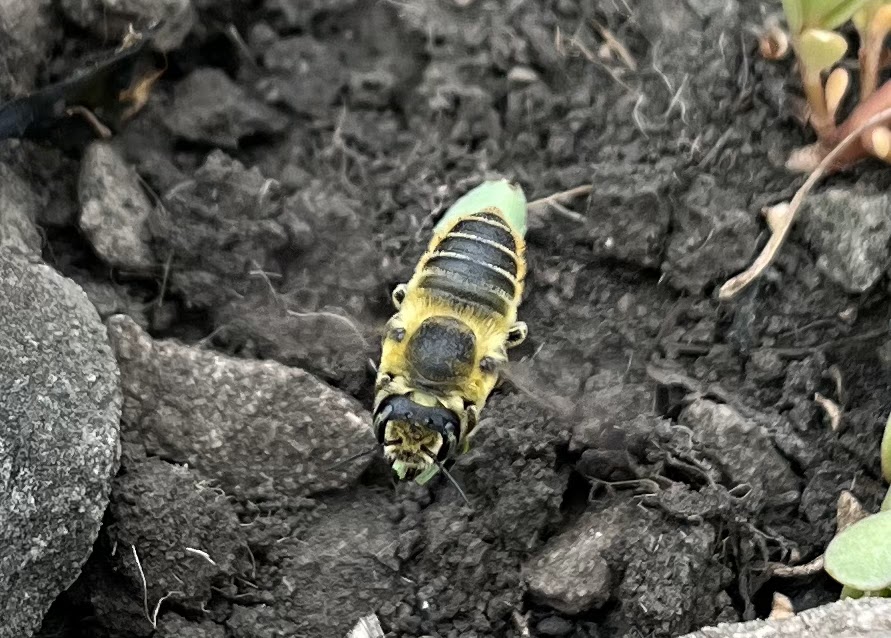
As for the honeybees, we found them within an older building on the prairie while we were seed collecting/scouting. In this case, I was not surprised to stumble upon them here as I have found honeybees in similar structures before, but I was surprised to see exposed comb! It is not ideal for them to utilize the comb for storage or rearing their young, although this comb could serve a hidden purpose not seen by the observer!
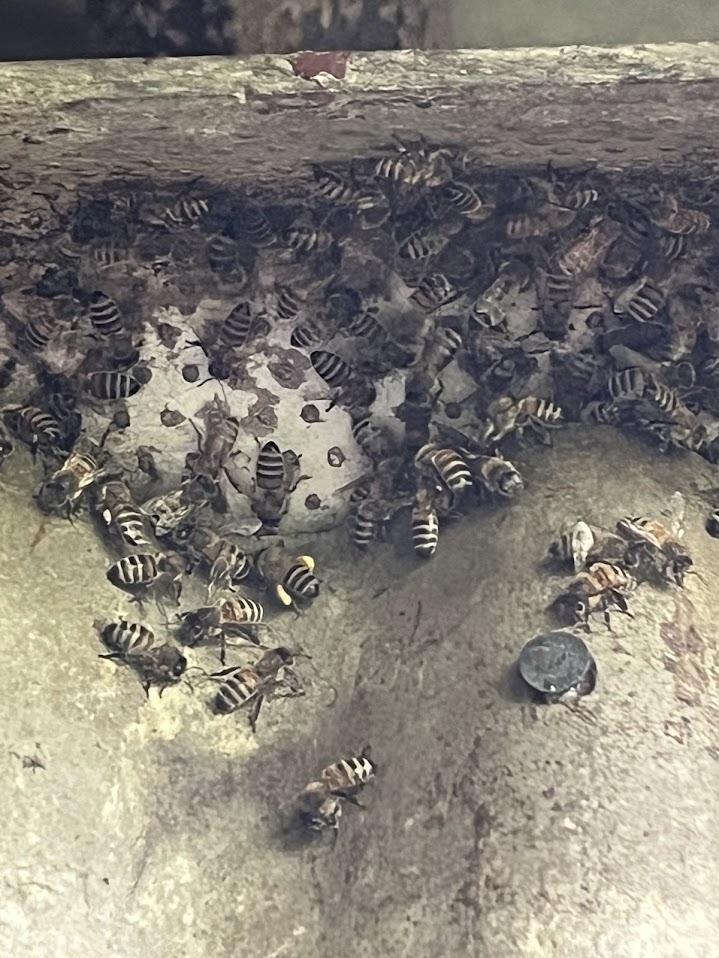
With that, August on the prairie was filled with a plethora of pollinators that added to the fun of seed collecting! As fall slowly sets in, I hope to see many more flying/buzzing critters!
